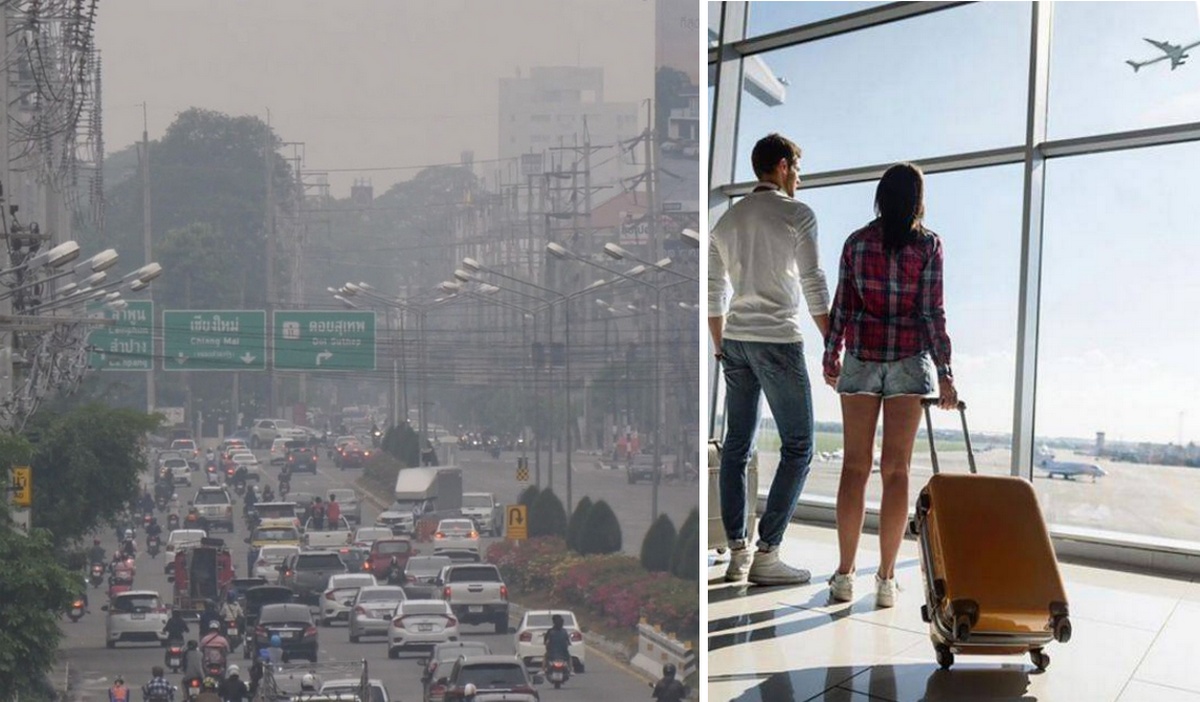In the famous region of Thailand, the number of tourist reservations fell by 45%. The reason for this was the high level of pollution. On Monday, April 10, the Thai government urged people to avoid active recreation in dangerous regions, as there is nothing to breathe there, the CNN channel reported.
We are not talking about the southern provinces of the country, but about the northern ones, more precisely – the largest city in the north of Thailand, the capital of the province of the same name, Chiang Mai, and its adjacent territories. The air in these surroundings scares away tourists and alarms residents. For several weeks last month, the city topped IQAir’s global ranking of poor air quality, which broadcasts air quality. The Thai city, surrounded by mountains and famous for countless Buddhist temples, has overtaken last year’s leader, Lahore in Pakistan, where PM2.5 concentrations are currently 9.8 times higher than the WHO’s recommended annual average air quality value, and New Delhi in India. , which became 2022 the city with the most polluted atmosphere in the South Asian Republic.
So what is the province losing due to bad air?
In pre-spring 2019, Chiang Mai was visited by 10.8 million people. Since then, their number has been constantly decreasing. This can be seen from the number of hotel reservations, which has already decreased by 45%. Such data was announced on Monday by the president of the Northern branch of the Association of Hotels of Thailand, Phunut Thanalaopanich, in a conversation with Reuters. This figure is a far cry from the 80-90% expected ahead of the Thai New Year holiday from April 13 to 15, 2023, known as Songkran.
Locals who live off tourism also see a tourist outflow, which affects their comfort of life. “It (has) affected my business… people don’t come, (they) can’t enjoy the scenery,” complained Sunat Insao, 53, who sells orange juice to visitors.
Thai officials are aware of the poor air quality in the north of the country. Due to its deterioration, the Ministry of Health of Thailand urged the public to avoid active recreation and to wear masks that can trap dangerous particles and prevent them from entering the lungs.
A few years ago, it was an attractive city among foreign immigrants. However, it emerged in March that the tourist hub was ranked 289th on the IQAir Air Quality Index (AQI), which measures the level of fine particulate matter inhaled in the air. It dropped to 171 on Monday but is still 19 times higher than the World Health Organization’s recommended level. “You can feel (the dust) on your face … I’m wiping my face and I see a tissue and I think, ‘This is dirty,'” said Fernanda Gonzalez, 27, who came to the province on a visit from Mexico.
Why did this situation arise?
Authorities blame the air pollution on a combination of forest fires and crop burning in Thailand and neighboring countries – the region borders Laos and Myanmar (formerly Burma). The kingdom’s Prime Minister Prayuth Chan-ocha said last week that he was coordinating efforts with those countries to reduce hotspots in the border area to curb cross-border haze.
A 36-year-old resident of Chiang Mai, Patsharasakon Po, told the publication that she is worried about allergies and cancer. “Every year the situation is getting worse and worse,” she said.
Reference: Chiang Mai is the third largest city in Thailand. It is known as the ancient cultural center of the country and is one of the popular tourist destinations. Historical and art museums, exhibitions of modern art, and expositions about the life of the mountain peoples of the north of the country have been opened in the city. The city also hosts several permanent festivals and holidays.

